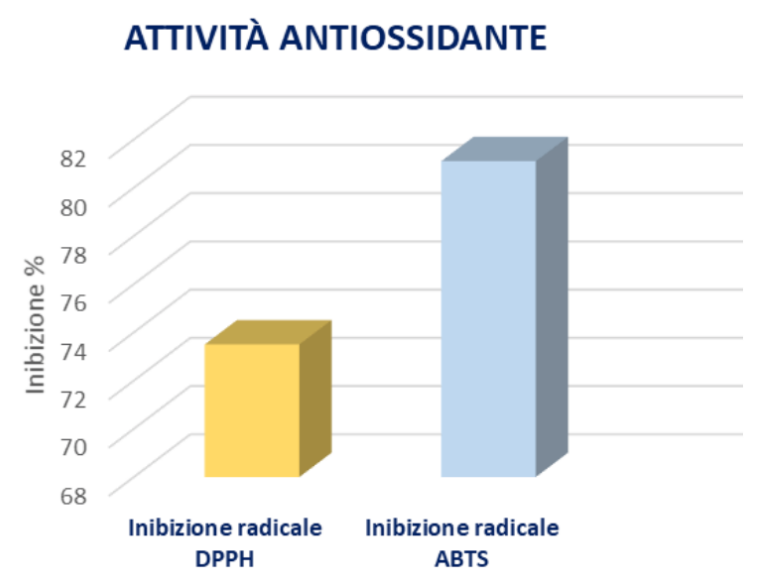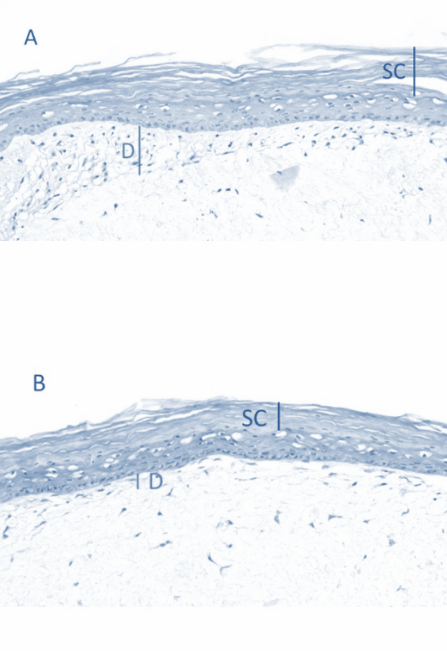HydraOIL

| Commercial name | HydraOIL |
| Application | Skin care |
| Function | Moisturizer / Antioxidant |
| Use level | 1-3% |
Benefits
HydraOIL is a blend of vegetable oils rich in bioactive substances with outstanding moisturizing and antioxidant properties:
- Avocado oil
- Rice crustacean oil
- Coconut oil
- Jojoba oil
- Vineyard oil
- Indian fig oil
EVALUATION OF ANTIOXIDANT ACTIVITY: ACTION SCAVENGER ON RADICAL ABTS
ABTS (2,2′-azinobis-(3-ethylbenzothiazoline-6-sulfonic acid)) is a hydrophilic radical with a maximum absorption of around 734 nm. The reaction depends on the ability of the antioxidant to donate hydrogen atoms.
The method is based on the ability of the antioxidants to act on the radical cation ABTS, a blue-green chromophore with a characteristic absorption at 734 nm.
ABTS • + was generated by the reaction of an aquatic solution of ABTS (7 mM) with potassium persulfate 2,45 mM (K2S2O8). The resulting mixture was left in the dark at room temperature and, after 16 hours, diluted with distilled water at an absorption of 0.999 ± 0.030 at 734 nm.
To evaluate the antioxidant properties, HydraOIL was added to 1 ml of the final ABTS solution and to 0.9 ml of distilled water. A control was prepared in the same reaction conditions but using distilled water instead of the sample. After 6 minutes, the absorption was measured at 734 nm.
The data obtained are expressed as a percentage of radical inhibition, and are shown in Figure 1.

EVALUATION OF ANTIOXIDANT ACTIVITY: SCAVENGER ACTION ON THE DPPH RADICAL
DPPH (2,2’-diphenyl-1-picrylhydrazyl) is an organic free radical with a peak absorption at 515-528 nm and allows to evaluate the antioxidant activity of various compounds by means of a spectral photometric measurement. The reaction involves the reduction of the DPPH radical by the antioxidant molecules with the formation of a compound of yellow color, the diphenylpicrilidrazine.
The extent of the reduction reaction depends on the ability of the molecules to act as electron donors. In order to assess the antioxidant properties of the product in question, the scavenger activity against DPPH radicals was determined by adding HydraOIL to 9.9 ml of a solution of DPPH (200 μM) prepared in ethanol.
The absorption was read after 15 min at 517 nm.
The data were expressed as a percentage of inhibition and are shown in Figure 1.
EVALUATION OF THE EFFECT OF HYDRATANT IN VITRO
HydraOIL’s moisturizing action was evaluated through the analysis of three-dimensional models of artificially dehydrated epidermis, and subsequently treated with the sample in question.
The appearance of the skin models was evaluated through histological analysis and highlighted the hydrating ability of HydraOIL.

